0065 For animals, specifying signs constitute a creatures’ Umwelt (or Significant World). The content and situation level of a two-level interscope are joined when a subject, a content-level actuality2, appears.
0066 Consider the howl of a wolf.
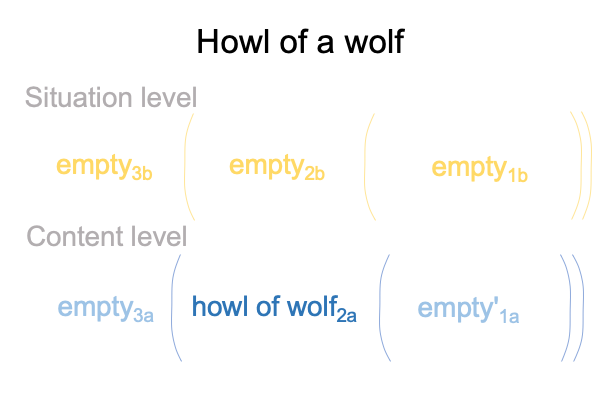
In the scholastic world, a howl2a is subjective (the subject matter is a thing) and an image of a wolf2b is objective (the object is not the thing, but is a thought about the thing).
Both play a role in a specifying sign-relation. A specifying sign traverses the content and situation levels.
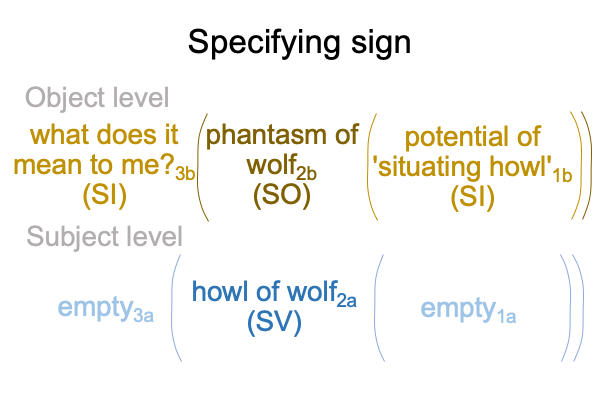
0067 If I am a sheep, I hear the howl2a (SV) and immediately conjure a phantasm of a wolf2b (SO) within the normal context3b of “what does it mean to me?” (SI) arising from the potential of situating the howl1b (SI).
In the modern world, the howl2a is objective (that is, not dependent on who is hearing it). Also, a phantasm of a wolf2b is subjective (that is, dependent on who is thinking it).
Surely, when it comes to the terms, “subject” and “object”, the modern world presents an inverse of the scholastic.
The locus of “the subject” has switched from the subject matter to the thinking thing. The former locus is scholastic. The latter is modern.
0068 Keep that in mind when I say that there seems to be a backflow from the situation to the content level. The situation-level question3b, “What does it mean to me?”, flows back into the content-level query3a, “What is happening?”.
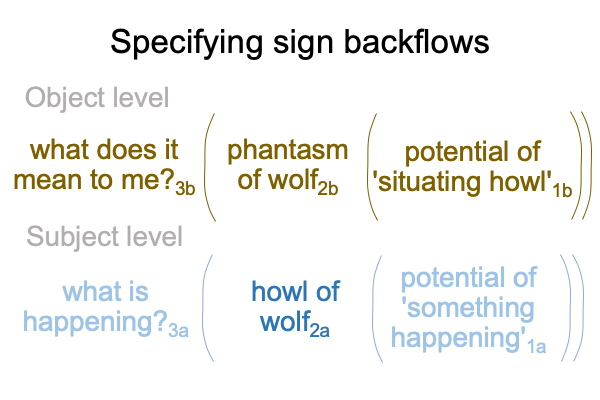
In scholastic terms, the objective flows back into the subjective.
0069 At the same time, if I am a sheep, the situation-level phantasm of a wolf2b stands for a perspective-level question, “Where is my shepherd?”2c, in regards to the normal context of sensible action3c and the possibilities inherent in ‘protection’1c.
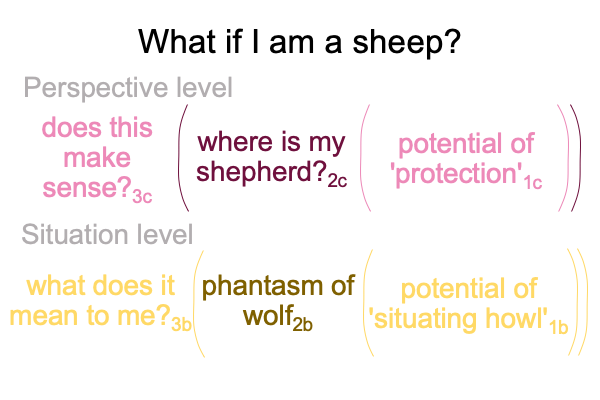
0070 The attempt to make sense3c of what it means to me3b and what is happening3a belongs to the sign-interpretant of an exemplar sign. So does its3c potential1c. An exemplar sign traverses the situation and perspective levels. In the exemplar sign, the situation level is intersubjective (rather than objective) and the perspective level is suprasubjective (a relation that everyone can agree upon… or maybe… at least, hold in mutual regard and, in the best case, turns out to be true).
Here is a picture.
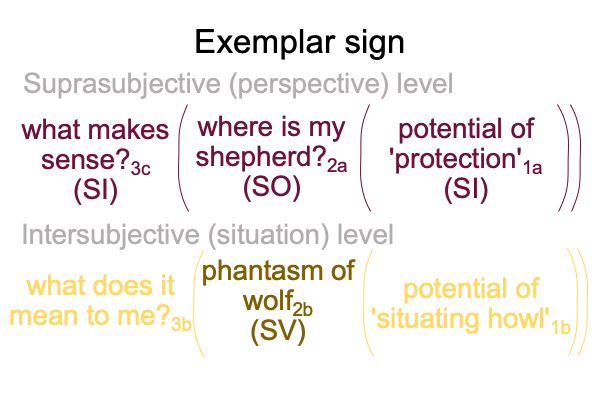
The specifying and exemplar signs are discussed in Comments on John Deely’s Book (1994) New Beginnings, by Razie Mah, available at smashwords and other e-book venues.
